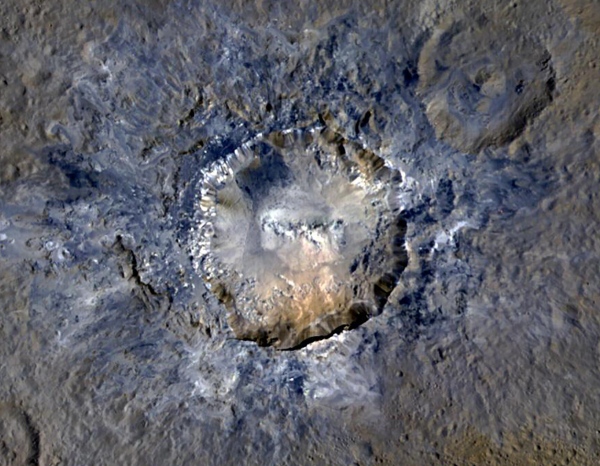
Ceres’ Haulani Crater, with a diameter of 21 miles (34 km), shows evidence of landslides from its crater rim. Smooth material and a central ridge stand out on its floor. This image was made using data from NASA’s Dawn spacecraft when it was in its high-altitude mapping orbit, at a distance of 915 miles (1,470 km) from Ceres.
This enhanced color view allows scientists to gain insight into materials and how they relate to surface morphology. Rays of bluish ejected material are prominent in this image, the color having been associated with young features.
“Haulani perfectly displays the properties we would expect from a fresh impact into the surface of Ceres. The crater floor is largely free of impacts, and it contrasts sharply in color from older parts of the surface,” said Martin Hoffmann, co-investigator on the Dawn framing camera team at the Max Planck Institute for Solar System Research in Göttingen, Germany.
The view above is not how the area would look in “real life”—to our eyes Ceres would appear a fairly uniform grey. (See a larger view of the region here.)
The polygonal shape of Haulani (and other craters on Ceres) is a result of stress patterns, possibly from the cooling and contracting of its crust.
Ceres was the first object discovered in the asteroid belt and is named for the Roman goddess of corn and harvests. Haulani is named after the Hawaiian goddess of plants.
Source: NASA/JPL
That is really interesting. How did you get the idea of writing about this?
A very fascinating topic!
Please go ahead and check my blog out too!
http://www.thecatastrophyoftravelling.com
LikeLike